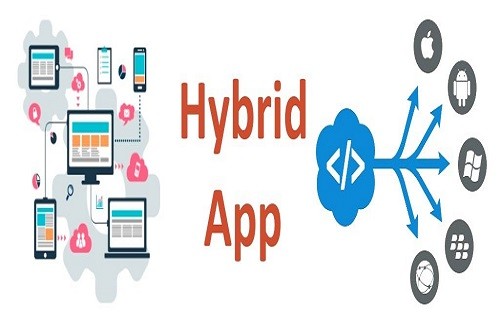
Jul 20, 2023
Demystifying Hybrid Applications: The Best of Both Worlds
In the ever-evolving world of mobile app development, businesses and developers constantly seek ways to create apps that offer the best user experience across various platforms without breaking the bank. Hybrid applications have emerged as a compelling solution that combines the benefits of both native and web applications, offering a cost-effective and efficient approach to mobile app development. In this blog, we'll explore the concept of hybrid applications and why they have become a popular choice for businesses and developers alike.
Understanding Hybrid Applications:
Hybrid applications, as the name suggests, blend elements of both native and web applications. They are developed using web technologies like HTML, CSS, and JavaScript, and then wrapped in a native container. This container allows the app to be installed and run on users' devices just like a native app. While the core of the application is web-based, it gains access to certain device features and APIs through the container, offering a more native-like experience.
Benefits of Hybrid Applications:
1. Cost-Effectiveness: Developing a single hybrid app that can run on multiple platforms (iOS, Android, etc.) is more cost-effective than creating separate native apps for each platform.
2. Faster Development: Since hybrid apps use web technologies, developers can reuse code across platforms, reducing development time and effort significantly.
3. Consistent User Experience: Hybrid apps provide a consistent user experience across platforms, ensuring that users get the same look and feel regardless of the device they use.
4. Easy Maintenance: Updating a hybrid app is straightforward, as changes to the codebase apply universally to all platforms, reducing maintenance complexities.
5. Access to Device Features: While web apps have limited access to device features, hybrid apps can access features like camera, GPS, and notifications through the native container.
6. Offline Functionality: Hybrid apps can cache data locally, allowing users to access certain features and content even when offline.
Challenges of Hybrid Applications:
1. Performance: Hybrid apps may not match the performance of native apps, especially for graphics-intensive applications.
2. Dependency on Native Containers: Hybrid apps rely on the performance and capabilities of the native container, which could impact overall app performance.
3. User Interface (UI) Customization: Achieving highly customized UI and design elements may require additional effort compared to native apps.
Popular Hybrid Application Frameworks:
Several frameworks have emerged to facilitate hybrid app development. Some of the popular ones include
1. Ionic: Based on AngularJS and Apache Cordova, Ionic offers a rich set of UI components and tools for building attractive and responsive hybrid apps.
2. React Native: Although React Native is primarily known for native app development, it allows developers to create hybrid apps with React Native Webview components.
3. Flutter:Developed by Google, Flutter is primarily for native app development, but developers can use it to create hybrid apps by embedding web views.
Conclusion:
Hybrid applications represent an excellent compromise between native and web apps, offering a cost-effective and efficient way to reach a broader audience across multiple platforms. While they may not be suitable for all use cases, their benefits in terms of development speed, cost savings, and cross-platform compatibility make them an attractive choice for businesses aiming to deliver engaging and feature-rich mobile experiences to their users. As hybrid app development continues to advance, we can expect even greater performance and capabilities, cementing their position as a powerful tool in the world of mobile app development.